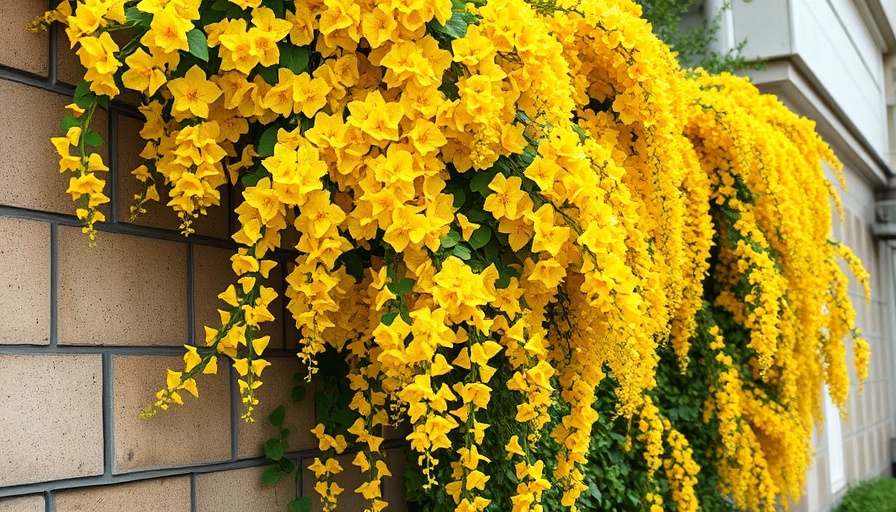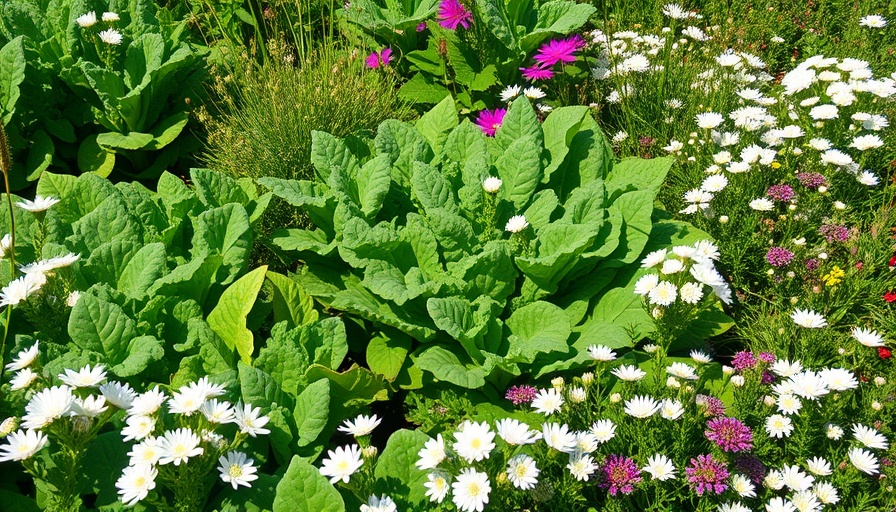
Understanding Invasive Plants: A Hidden Threat to Our Gardens
For many homeowners, curating a beautiful garden is a labor of love that requires careful planning and passion. However, what often goes unnoticed in this journey are the invasive plants that stealthily creep in, threatening to take over our carefully cultivated landscapes. Invasive species, particularly non-native plants, can disrupt local ecosystems, outcompete native plants for resources, and cause lasting damage. By learning to identify the so-called 'Dirty Dozen' of invasive plants, gardeners can take action and make impactful choices that benefit not just their gardens but the broader environment.
Top 12 Invasive Plants to Avoid and Their Native Alternatives
To champion ecological gardening, it's crucial to steer clear of invasive plants that dominate nurseries. Here’s a list of the Dirty Dozen invasive species:
- Miscanthus sinensis - A common ornamental grass that can choke out local flora. In its place, opt for the stunning Northwind upright switchgrass (Panicum ‘Nordwind’), which supports local wildlife while providing similar structural beauty.
- Barberry - Known for its sharp thorns and vibrant foliage, it’s advisable to replace it with Common ninebark (Physocarpus opulifolius) which offers seasonal interest and supports local fauna.
- Japanese honeysuckle - Instead, cultivate the native Virginia creeper (Parthenocissus quinquefolia), which is lower-maintenance and supports pollinators.
- English ivy - Replace with native ground covers such as pachysandra or wild ginger, which are better for soil and local ecology.
- Tree of Heaven - Choose the lovely native black locust (Robinia pseudoacacia) instead, known for its beautiful flowers and ecological benefits.
- Bamboo - Rather than the fast-spreading invasive types, consider clumping bamboo varieties that are non-invasive and offer privacy without the risk.
- Purple loosestrife - Replace with native moisture-loving plants like Joe Pye weed (Eutrochium purpureum), which blooms spectacularly.
- Chinese wisteria - Switch to American wisteria (Wisteria frutescens), which is gentler on local ecosystems.
- Canada Thistle - Try native asters instead, which provide color and food for pollinators without taking over.
- Common reed - Substitute with native sedges that stabilize soil and provide habitat.
- Periwinkle - Opt for native violets, which are beautiful and beneficial to local fauna.
- Yellow flag iris - Replace with native water iris species that promote biodiversity in wetland areas.
The Ripple Effect of Invasive Species
Once invasive plants are introduced into an ecosystem, they can quickly displace native species and disrupt the balance of the environment. This not only harms local plants but also affects the native wildlife that depends on them for survival. For instance, a native butterfly species may rely on a native flower for its lifecycle. If that flower is outcompeted by an invasive one, the butterfly may face extinction in that locale. As Evelyn Beaury of the New York Botanical Garden emphasizes, “The more we can do to prevent the next big invasive plant, the better off we are.”
Taking Action: Best Practices for Eco-Friendly Gardening
By cultivating native plants, homeowners can create beautiful landscapes that not only enhance their homes but also contribute positively to their local ecosystems. Here are some actionable insights for proactive gardening:
- Research Before You Buy: Always check if a plant is considered invasive in your area before making a purchase. Choose native alternatives that thrive in your local climate.
- Educate and Advocate: Share your knowledge with fellow gardeners and engage with local gardening groups to promote biodiversity. Host community workshops to raise awareness about the importance of native plants.
- Participate in Restoration Projects: Collaborate with local environmental groups to participate in restoration projects, helping to remove invasive species from public lands and replace them with native flora.
- Practice Responsible Gardening: Limit the use of chemical fertilizers and pesticides. These can harm non-target species, including beneficial insects that play a key role in pollination.
- Document Your Garden: Keep a journal of the species you plant along with their performance and ecological impact. This helps track progress while providing data for future gardening efforts.
The Path Forward: Gardening with Purpose
As the global conversation about sustainability evolves, the role of gardening in ecological health becomes paramount. Every homeowner has the auspicious chance to restore nature—one garden at a time. With careful selection of native plants, homeowners like you can champion a movement towards greener, more sustainable gardening practices.
So why not take the plunge? Make informed choices and remove invasive plants from your landscape. Instead of being passive consumers of outdoor beauty, become active participants in the preservation of native ecosystems. The future of our gardens—and the biodiversity they support—depends on it.
 Add Row
Add Row  Add
Add 






Write A Comment